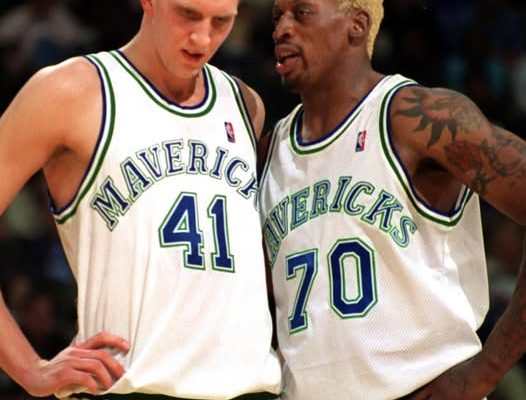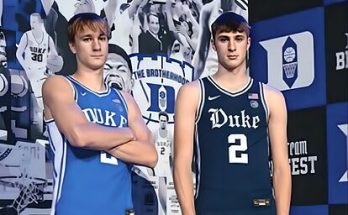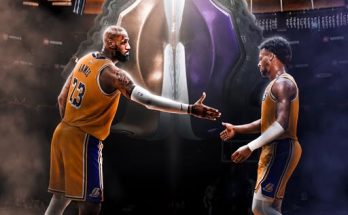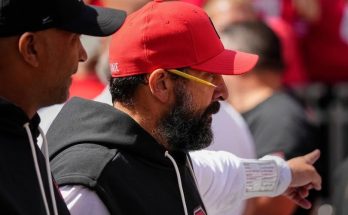When people think of Dennis Rodman, the first images that likely come to mind are his wild hair colors, eccentric fashion choices, and unforgettable off-court antics. But beyond the spectacle, Rodman remains one of the most dominant rebounders in NBA history, a player whose basketball IQ, positioning, and relentless energy made him a force of nature on the court. It’s easy to think that his prime years were left behind with the Chicago Bulls’ final championship in 1998, or even with his earlier stints on the Detroit Pistons or San Antonio Spurs. But what might surprise many is that in his final NBA season, playing for the Dallas Mavericks in 2000, Dennis Rodman averaged an astounding 14.3 rebounds per game.
This statistic becomes even more compelling when you consider the broader context. At 38 years old and well past what most would consider the athletic prime of an NBA player, Rodman’s performance on the glass was not just impressive—it was borderline miraculous. He only played in 12 games that season, but his numbers were nothing short of elite. In an era increasingly filled with younger, faster players and big men beginning to stretch the floor, Rodman proved that age, reputation, and public perception couldn’t overshadow his enduring impact on a basketball court.
Understanding how Rodman was able to post such dominant rebounding numbers even at the twilight of his career requires more than just a surface-level appreciation of his hustle. Rodman didn’t rebound just by jumping higher or pushing people out of the way. He studied the game with the intensity of a scholar. He watched game film—not just of opponents, but of how missed shots bounced off the rim depending on the shooter’s mechanics, the angle, the velocity. He treated rebounding as a science, combining anticipation, instincts, and positioning to perfection.
Rodman’s time in Dallas was brief, tumultuous, and ultimately unsuccessful in terms of wins and team chemistry. But it remains a fascinating final chapter in a legendary career. The Mavericks were a young team at the time, featuring the emerging European phenom Dirk Nowitzki, a sharp-shooting Steve Nash, and the steady leadership of Michael Finley. Mark Cuban had just purchased the team and was making splashy moves in hopes of bringing attention and success to a franchise that had struggled to find its footing. Signing Dennis Rodman was a part of that strategy—a bold, headline-grabbing decision that fused basketball with entertainment.
What Cuban and the Mavericks got was vintage Rodman on the boards. Even in limited minutes—he averaged only about 32 minutes per game in his stint—Rodman dominated the glass like he had in his heyday. For reference, a rebounding average of 14.3 would have led the NBA in many seasons. That Rodman could do this in limited games, at an advanced age, and while still managing the wear and tear of his style of play, is a testament to just how unique a player he was.
This performance also sheds light on how undervalued Rodman remains in certain analytical circles. In a league increasingly driven by points and highlight-reel plays, rebounding is often treated as a secondary or supporting statistic. Yet controlling the glass changes the complexion of a game. It alters possessions, affects pace, and breaks the rhythm of opposing offenses. Rodman made a career out of understanding that rebounding wasn’t just about collecting missed shots—it was about creating opportunities, draining the opponent’s energy, and bending the flow of the game toward his team’s advantage.
In his Dallas stint, Rodman still had all the tools. His box-outs were textbook; his timing was immaculate. He wasn’t the tallest or the strongest, but he had what so few players ever master—the art of anticipation. Watching Rodman rebound was like watching a chess grandmaster at work. He was always a few moves ahead, always in the right place before anyone else even realized the ball was going to be loose.
Rodman’s rebounding numbers in Dallas should not be dismissed simply because he played only 12 games. In fact, the shortness of the stint underscores just how remarkable he was. Players coming into a new system, at that age, with limited preparation, usually struggle to find rhythm. But Rodman wasn’t any ordinary player. He stepped onto the court and instantly made his presence felt.
Of course, Rodman’s time in Dallas was not without its controversies. He clashed with coaches, had unpredictable attendance habits, and continued his off-court persona with the same intensity as his earlier years. These issues were part of the reason his tenure was cut short. But within the chaos, there remained that undeniable spark of basketball brilliance. Every time a shot went up, there was a near certainty Rodman would be near it when it came down. His instincts were so refined that even the most polished offensive rebounders couldn’t beat him to the spot.
It’s instructive to compare Rodman’s performance that season to other elite rebounders of the time. Players like Shaquille O’Neal, Dikembe Mutombo, and Ben Wallace were dominating the boards with size and power. Yet here was Rodman, almost 40, still outpacing them on a per-game rebounding average in that short run. That’s not just a statistical anomaly; it’s a showcase of mastery.
In fact, if one were to adjust Rodman’s per-game rebounding numbers in that 2000 season to a full 82-game slate, assuming he maintained health and playing time, we would be looking at a historically significant season. While it’s unlikely Rodman could have sustained that pace all year at his age, even a slight regression would have placed him among the top rebounders in the league.
So why did it all end so soon in Dallas? The short answer is fit. Rodman’s personality, always volatile, was even more combustible with age. The Mavericks were a team on the rise, trying to establish a new identity and culture. Rodman, for all his rebounding brilliance, didn’t align with that long-term vision. Cuban, always a savvy businessman, likely realized that the cost—both culturally and structurally—outweighed the benefits, no matter how gaudy the rebounding totals were.
Still, that short spell remains a powerful reminder of what Rodman brought to the game. It showed that greatness in basketball isn’t just about scoring titles or MVPs. Sometimes it’s about how a player imposes his will in ways that don’t show up on highlight reels. Rodman’s legacy as a rebounder is secure, but moments like his Mavericks stint illustrate just how deep that legacy runs.
Too often, fans and analysts alike fall into the trap of judging careers solely by cumulative stats or championships. Rodman won five titles, led the league in rebounds for seven consecutive seasons, and was a two-time Defensive Player of the Year. But stats only tell part of the story. The story of Dennis Rodman is about redefining what it means to have impact on a basketball court.
His stint in Dallas, while brief and dramatic, is a case study in the value of specialization. Rodman wasn’t trying to score 20 points per game. He wasn’t chasing headlines for his offensive output. He knew who he was—a defensive enforcer and rebounding machine. And he played that role better than anyone in the history of the game.
Rodman’s average of 14.3 rebounds per game in his final NBA season should be discussed more often. It should be held up as an example to young players of how mastering one aspect of the game can not only define a career but sustain it longer than anyone expects. In a league where versatility is prized, there is still immense value in elite-level specialization. Rodman embodied that better than anyone.
Even in the modern NBA, where pace and space dominate, there is still room for players who can dominate the boards. The best teams understand the value of second-chance points and the importance of limiting opponents to one shot per possession. Rodman’s game might not have been pretty, but it was ruthlessly effective.
In many ways, Rodman’s final season is symbolic of his entire career. Overlooked, doubted, and sometimes misunderstood, he still found a way to rise above. He didn’t need fanfare to prove his worth—just a missed shot and a path to the ball. While his tenure in Dallas ended without fanfare, his presence left a lasting impression on those who paid close attention. Mavericks fans may not remember many wins from those 12 games, but anyone watching closely will remember the boards Rodman grabbed, the hustle plays he made, and the sheer will he displayed.
It also provides a fascinating “what if” in NBA history. What if Rodman had found a more stable situation for his final years? What if a contender had been willing to manage his personality in exchange for his rebounding? Could he have added another ring to his collection? Could his influence have extended into the early 2000s in a more meaningful way?
Perhaps the answer lies not in imagining what might have been, but in appreciating what was. Rodman, at 38 years old, out-rebounded nearly every player in the NBA over a 12-game sample. That kind of performance deserves more than a footnote in basketball history—it deserves to be etched in the memory of anyone who loves the game.
Dennis Rodman may be remembered for a lot of things—his tattoos, his hair, his friendship with North Korean leaders—but true basketball fans know what made him special. It wasn’t the headlines or the antics. It was the relentless pursuit of the ball, the willingness to do the dirty work, and the genius-level understanding of rebounding mechanics. His 14.3 rebounds per game in Dallas didn’t just cap off a Hall of Fame career; it put an exclamation point on one of the most unique and impactful legacies the NBA has ever seen.
And maybe that’s the best way to remember Dennis Rodman—not as a sideshow or a curiosity, but as a master of his craft. In his final season, for 12 brief games, he reminded the basketball world of just how brilliant he was. And for those who were watching closely, it was a final masterclass from a rebounding savant whose impact can still be felt every time a shot goes up and a player boxes out with purpose.



